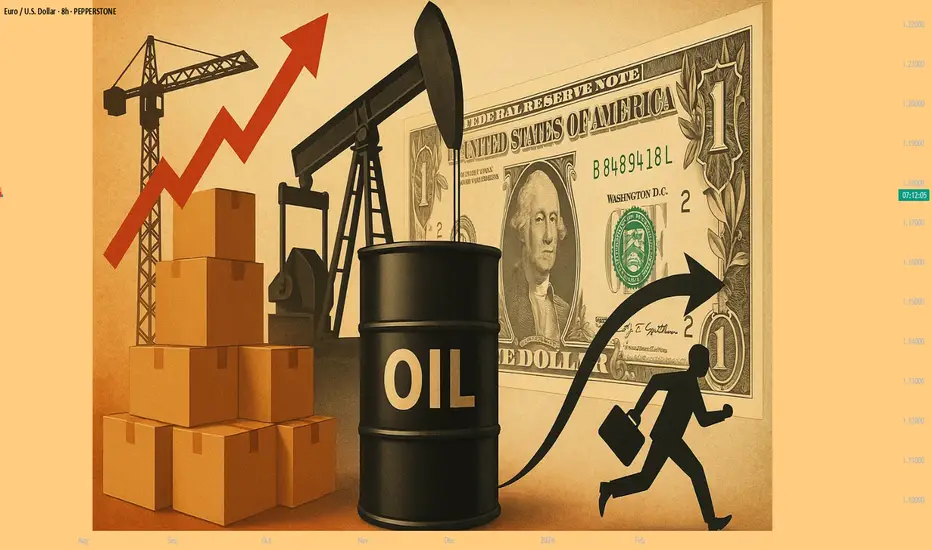Hello, I am Forex trader Andrea Russo and today I want to talk to you about the week full of tensions and opportunities in global currency markets. The new tariff threats from the United States, the strategic moves of OPEC + and the growing instability in the British government bond market are shaking up the entire Forex landscape, with direct implications on USD, AUD, CAD, GBP and JPY. I thank in advance the Official Broker Partner PEPPERSTONE for the support in the creation of this article.
The most explosive news concerns the possible imposition of new duties by the United States, with a deadline set for July 9. The American administration, according to Reuters sources, is ready to activate tariffs of up to 70% on some categories of strategic imports if new bilateral agreements are not signed by the end of the month. The market has reacted cautiously, but signs of systemic risk are starting to filter through: US futures are falling, capital is moving into safe havens, and the dollar is starting to lose ground structurally.
The decline in oil has added further pressure. OPEC+ announced the start of an increase in production from August, with about 550 thousand barrels per day more than the current level. This has hit Brent and WTI hard, which are now both below $68. Currencies that are highly correlated to commodities, such as CAD and NOK, are weakening, especially in the absence of a monetary response from their respective central banks.
Meanwhile, the UK is facing a delicate moment. Yields on 10-year gilts have risen to their highest since April, with a sell-off that has forced the Bank of England to review the pace of its asset disposal. The instability of the British debt is putting pressure on the pound, already tested by inflation that is struggling to recover and a stagnant housing market. The GBP/USD pair remains extremely volatile, while EUR/GBP is moving sideways waiting for a clearer direction.
But the star of the week is Australia. The AUD has scored the eighth consecutive week of gains, taking advantage of both the weakness of the dollar and the expectations of a more gradual future rate cut by the RBA. The AUD/USD cross has broken the highs of November 2024 and is now targeting levels of 0.67-0.68. The same goes for NZD/USD, which is also in a phase of bullish consolidation. The US dollar, on the other hand, has recorded its worst start to the year since 1973: a combination of political uncertainty, fiscal instability and falling confidence is eroding global demand for the USD, pushing many managers to diversify into emerging or commodity-linked currencies.
Finally, the Federal Reserve is taking its time. Powell stated that the path of rates will be closely linked to the evolution of trade tensions. The Fed, therefore, appears more wait-and-see than expected, postponing a possible cut to the third quarter. This leaves the dollar exposed to downward pressure, especially if inflation were to slow further in the meantime.
In summary, this week offers extremely interesting scenarios for Forex traders. Institutional flows seem to favor alternative currencies to the dollar, while sentiment remains fragile on GBP and CAD. AUD, NZD and JPY emerge as potential winners, at least until new macro developments or significant technical breaks.
The watchword is: selection. With volatility on the rise and the geopolitical context rapidly evolving, only those who know how to read the movements of central banks and institutions in advance will be able to take full advantage of the opportunities offered by the markets.
🔵 Official Partner of PEPPERSTONE
Full Broker benefits & Socials
👉 andrearussoforextrader.com
If you want to receive:
✅ precise TAKE PROFIT
✅ precise STOP LOSS
✅ updates on My Trades
👉 Telegram Channel: t.me/swipeuptrading
Full Broker benefits & Socials
👉 andrearussoforextrader.com
If you want to receive:
✅ precise TAKE PROFIT
✅ precise STOP LOSS
✅ updates on My Trades
👉 Telegram Channel: t.me/swipeuptrading
Disclaimer
The information and publications are not meant to be, and do not constitute, financial, investment, trading, or other types of advice or recommendations supplied or endorsed by TradingView. Read more in the Terms of Use.
🔵 Official Partner of PEPPERSTONE
Full Broker benefits & Socials
👉 andrearussoforextrader.com
If you want to receive:
✅ precise TAKE PROFIT
✅ precise STOP LOSS
✅ updates on My Trades
👉 Telegram Channel: t.me/swipeuptrading
Full Broker benefits & Socials
👉 andrearussoforextrader.com
If you want to receive:
✅ precise TAKE PROFIT
✅ precise STOP LOSS
✅ updates on My Trades
👉 Telegram Channel: t.me/swipeuptrading
Disclaimer
The information and publications are not meant to be, and do not constitute, financial, investment, trading, or other types of advice or recommendations supplied or endorsed by TradingView. Read more in the Terms of Use.
